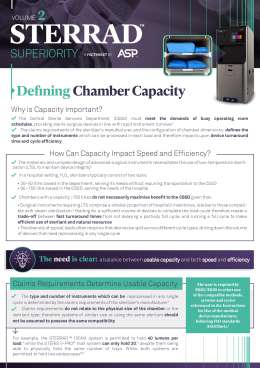The capacity of medical sterilizers has a direct impact on the speed and efficiency of surgical instrument reprocessing. Due to the smaller volume and diversity of surgical instruments requiring low-temperature sterilization,1, 2 sterilizers with large chambers do not always improve reprocessing capacity and can instead create a trade-off between fast turnaround times and efficient use of sterilant and natural resources.2
A balance is therefore needed between both speed and efficiency and the usable capacity of a sterilization system,2 which is influenced by two main factors:

